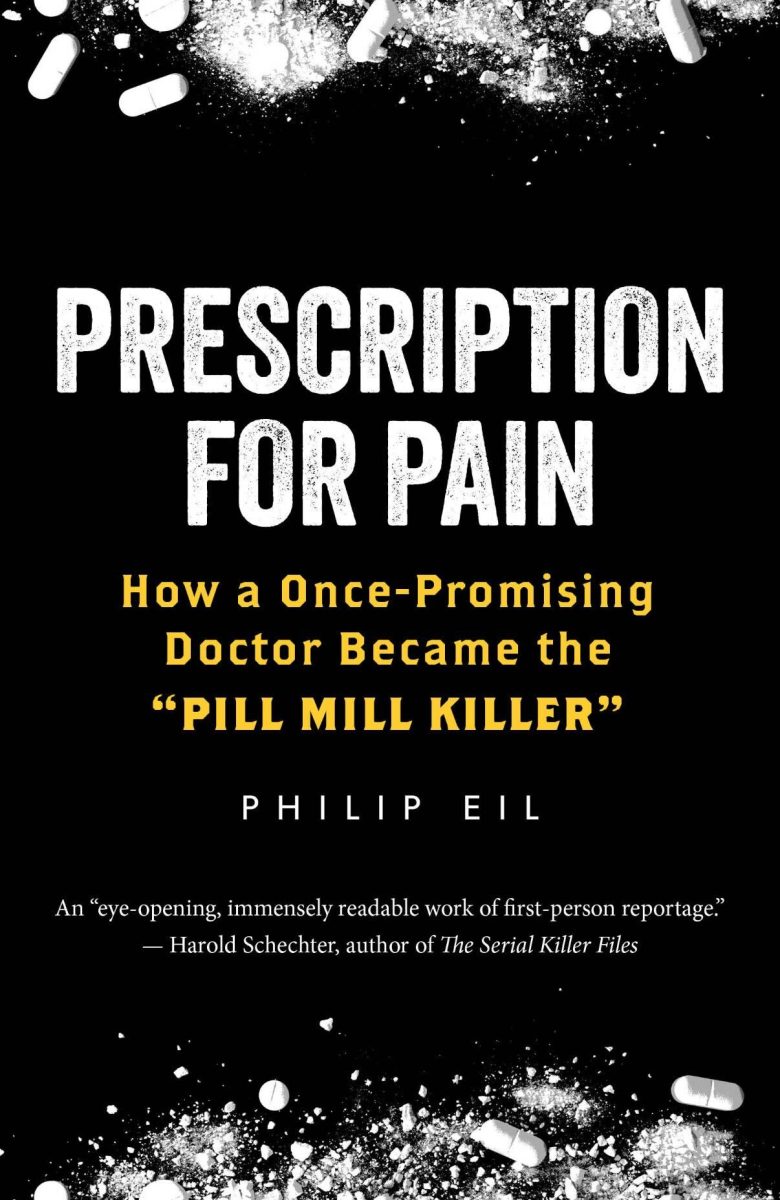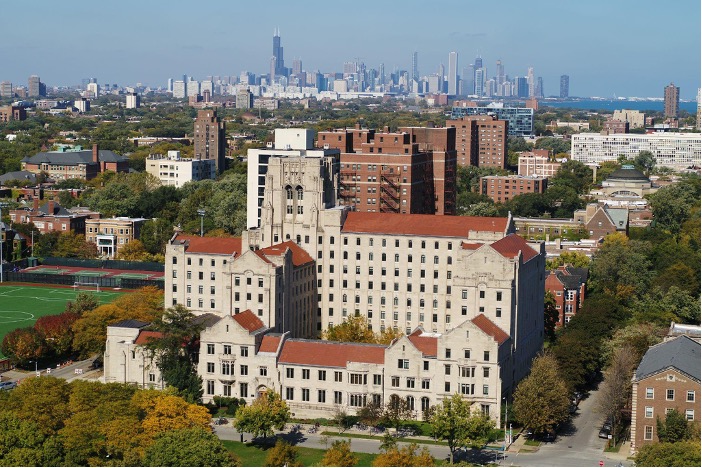
Paul Volkman, a 1974 Pritzker School of Medicine graduate, once said that his purpose as a doctor was to “relieve pain.” How then, did Volkman’s attempt at “pain relief” for his patients lead to a life in prison, serving four consecutive life terms for four convictions of unlawful distribution of a controlled substance? How did this bespectacled, socially awkward medical school student pulling all-nighters in Harper transform into the “Pill Mill Killer,” a man whose actions devastated lives and communities?
Author Philip Eil explores these questions in a thrilling, fast-paced true crime novel, Prescriptions for Pain: How a Once-Promising Doctor Became the ‘Pill Mill Killer’. Eil’s motivation for investigating Volkman’s case stemmed from a personal connection: his father had been Volkman’s classmate at the Pritzker School of Medicine, both graduating in 1974.
“These crimes were so serious, and it was so at odds with who I knew my dad to be and who I knew the people in his circle [to be],” Eil explained in an interview with the Maroon. “I wanted to know what happened. How does a guy with this background, with this pedigree, wind up in such a disturbing situation?”
Eil also cited the difference between Volkman’s future career and those of his classmates as one of the reasons why he was interested in Volkman’s case. “These were people who were in a very prestigious program, a very selective program, and who, by and large, went on to do pretty remarkable things. They went on to teaching positions at renowned universities. They produced research. Some of them won awards. And so I really wanted readers to get a sense of just how far off of that path Volkman had veered,” he said.
Eil’s approach to writing Prescription for Pain underscores his commitment to honoring Volkman’s victims. Eil felt it was necessary to reach out to the many Volkman had harmed to get their side of the story. Volkman destroyed lives and communities, and those affected still feel the devastating consequences of his greed. He overprescribed opioids to bring in consistent cash flow. This led to many deaths due to overdose and the destruction of communities from opioid addiction. The pain embedded in this harm conjured up some difficulty in Eil’s research, pushing him to act cautiously and with empathy. “I knew that I was a stranger, appearing out of the blue, usually via social media, asking people about some of the most sensitive, painful moments of their lives,” he said. “I was as transparent as possible, explaining who I was and what I was up to and why I was interested in this story.”
The book also highlights the broader corruption in the medical field. “I do think this is a story about corruption. You know, we often think of corruption in terms of politicians or maybe law enforcement, but corruption can happen in the medical sphere as well, and there’s money to be made there,” Eil noted. “There’s a lot of power to be wielded there, and the stakes are really high when that kind of corruption appears.” Volkman’s crimes raise concerns about the medical system. Even after many malpractice cases, Volkman was still allowed to practice. He was also given full permission to prescribe opioids as he chose. Through discussing the corruption within the medical field, Eil shines a light on the systematic problems that created the conditions for Volkman’s crimes.
Responses to Eil’s requests for interviews were mixed. Some people declined to speak, unwilling to reopen old wounds. Others, however, found solace in sharing their loved ones’ stories. “It was nice to encounter someone who cared about their life and wanted to learn about them,” Eil shared.
One of the book’s most compelling aspects is its deep dive into Volkman’s own psyche, a voice riddled with contradictions. While Volkman has consistently painted himself as a compassionate, law-abiding doctor, Eil’s meticulous fact-checking reveals a starkly different reality. “Volkman was incredibly unreliable, sometimes even dishonest,” Eil explained. “I often describe the book as one long exercise in fact-checking him.” Volkman’s narrative often clashed with the accounts of victims, colleagues, and legal authorities, forcing Eil to parse truth from fabrication. Eil ultimately ended communication with Volkman after refusing to assist him with legal research for an appeal.
Eil’s work stands out in the true crime genre for its empathetic treatment of victims. The book concludes with a poignant “In Memoriam” section, honoring those who lost their lives due to Volkman’s actions. “I didn’t want to sensationalize this story or reduce the victims to mere statistics,” Eil said. “I wanted to portray them as full human beings and position the events in their broader historical context.”
Prescription for Pain masterfully examines the systemic failures that enabled Volkman’s crimes. If a successful Pritzker School of Medicine graduate can become the “Pill Mill Killer,” couldn’t anyone?
Additional reporting contributed by Abigail Poag.








